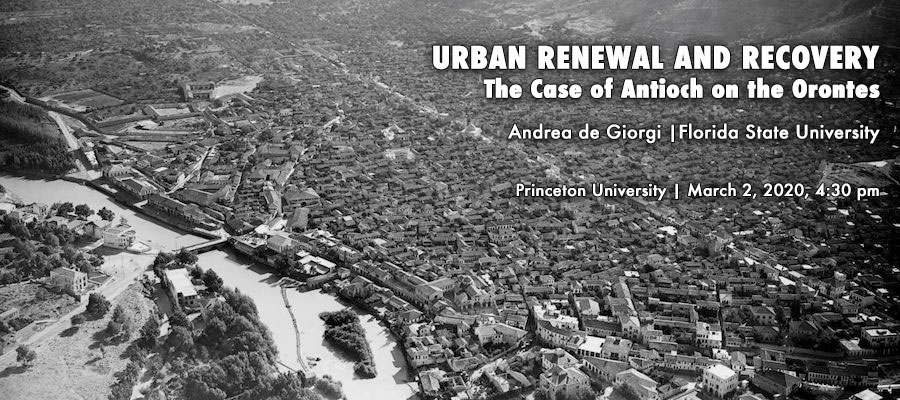Urban Renewal and Recovery: The Case of Antioch on the Orontes, lecture by Andrea de Giorgi (Florida State University), Princeton University, March 2, 2020, 4:30 pm
Antioch is the most significant and continuously occupied major city of the eastern Mediterranean. An ongoing flurry of research initiatives attests to the vitality of the field of Antiochene studies. So too, the scholarly community and public are ready to learn the city’s long and rich history and embrace it. Whether bringing into focus the materiality of the city or its pivotal role in the religious discourse of Late Antiquity, which reverberated throughout the Medieval periods, these analyses teem with the energy, contradictions, and dilemmas of a city that eludes firm characterizations. But Antioch is also a city that time and again had to recover from the action of earthquakes. From the early days of the Seleucid kings to the twelve seismic events that left the city in shambles during the sixth century AD, Antioch had to cope with the frail nature of its settlement. These disasters, like conquests, also became tropes and part of the city’s lore. While their actual impact is difficult to evaluate, it is apparent that they seem to have permanently altered the course of the classical city and ushered in its successive transformations. The residents’ unique resiliency, as made manifest by the relentless activity of rebuilding and their ability to constantly “reinvent” the city, are the main questions that this talk addresses.
Andrea U. De Giorgi is an associate professor in the Department of Classics at Florida State University. He specializes in Roman archaeology and visual culture of the Roman Empire from the Republic to Late Antiquity, with particular emphasis on the eastern provinces.
